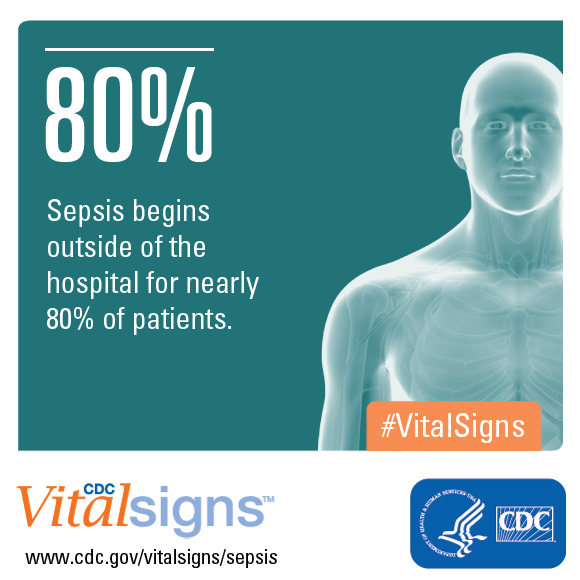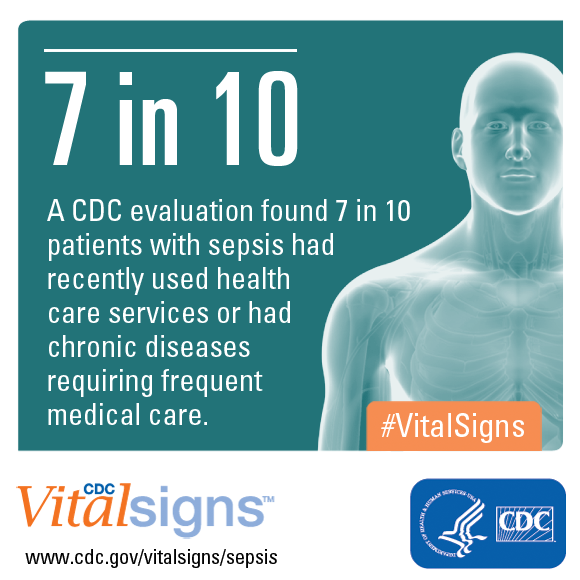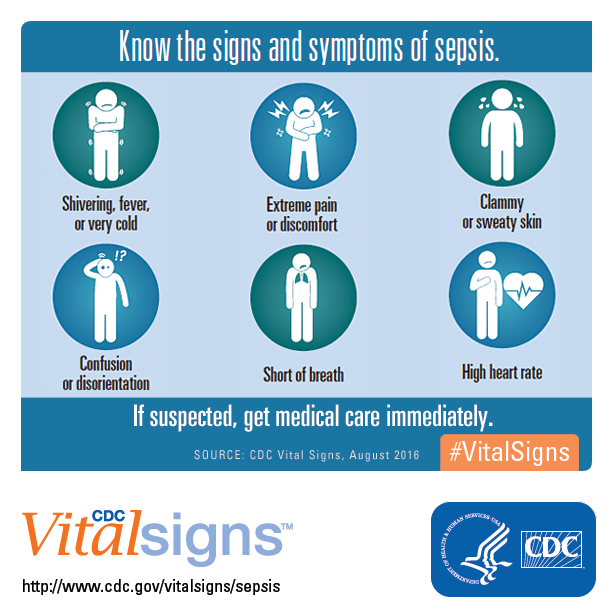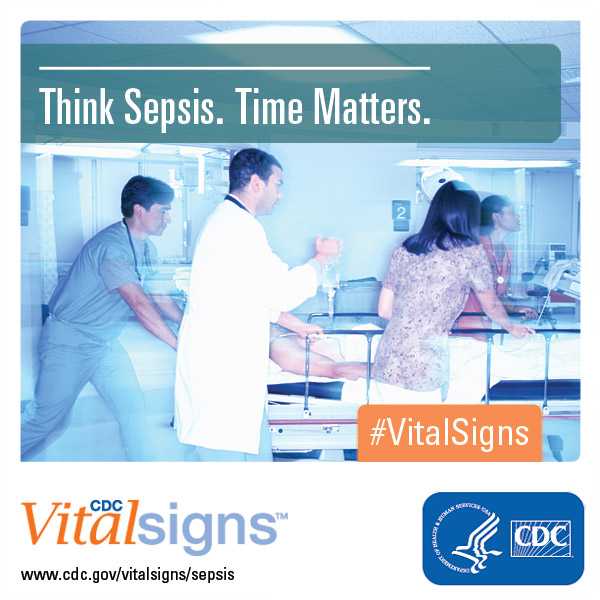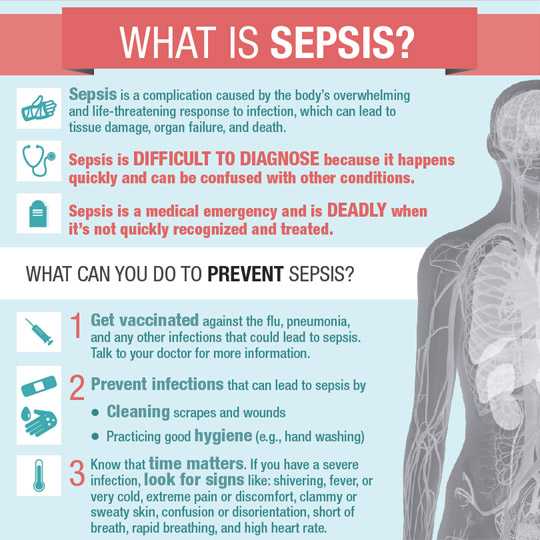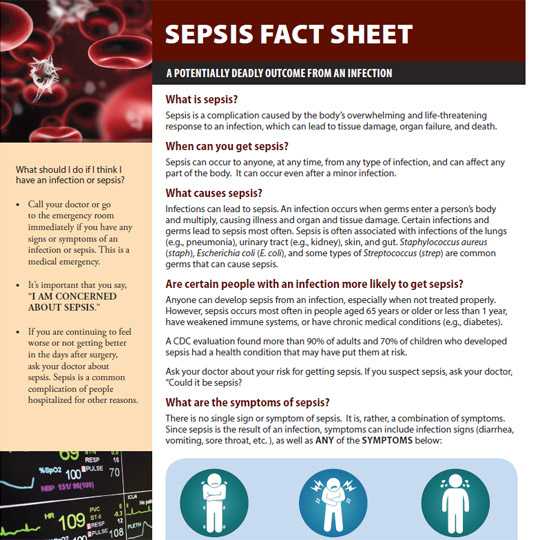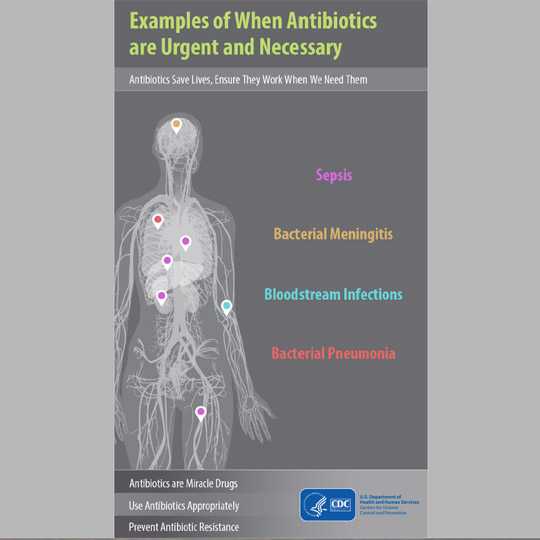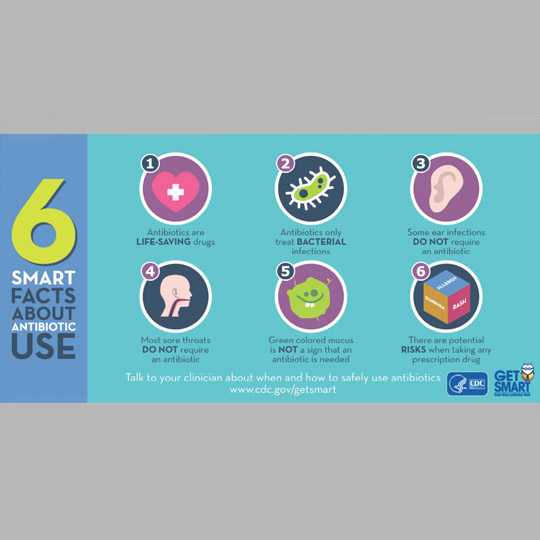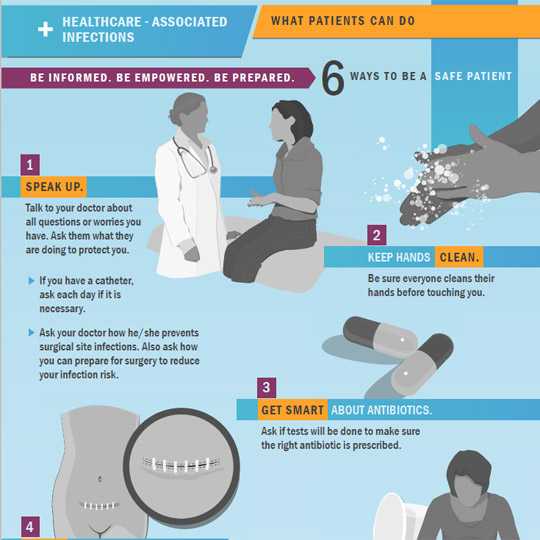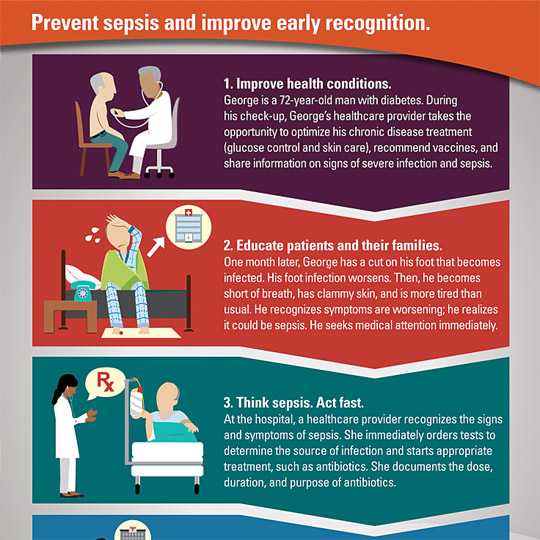Saving Patients from Sepsis
Early Recognition of Sepsis and Actions for Healthcare Providers
The Centers for Disease Control and Prevention’s (CDC) latest Vital Signs report raises awareness about sepsis, a complication caused by the body’s overwhelming and often life-threatening response to an infection. It is a medical emergency. It requires rapid intervention to prevent tissue damage, organ failure, and death.
The report found:
- 80% of the patients diagnosed with sepsis developed the condition outside of the hospital.
- Seven in 10 patients with sepsis recently used health care services or had chronic diseases requiring frequent medical care.
These are opportunities for healthcare providers to prevent, recognize, and treat sepsis long before it can cause life-threatening illness or death.
The signs and symptoms of sepsis include one or more of the following:
- Shivering, fever, or very cold
- Extreme pain or discomfort
- Clammy or discolored skin
- Confusion or disorientation
- Shortness of breath
- High heart rate
If patients or their family members are worried that an infection is getting worse, they should seek medication attention immediately and ask their healthcare provider “could it be sepsis?” If sepsis is suspected, doctors should treat immediately with antibiotics, and order tests to locate the infection and treat it.
Those considered to be high risk for developing sepsis include: people age 65 years or older, infants less than 1 year old, people who have weakened immune systems, and people who have chronic medical conditions (such as diabetes). While much less common, even healthy children and adults can develop sepsis from an infection, especially when not recognized early.
CDC is continuing to study the risk factors for sepsis, to promote early recognition of sepsis and infection prevention including: vaccination programs, chronic disease management and the appropriate use of antibiotics. CDC is also developing a tracking systems to measure the impact of successful interventions.
For more information and the full press release, please visit Saving patients from sepsis is a race against time.
Dr. Anthony Fiore Q & A
Contact Information
CDC Media Relations
(404) 639-3286
media@cdc.gov
Vital Signs Links
Factsheet:
English [1.74MB]
Spanish [1.92MB]
Spokespersons
Anthony Fiore, MD, MPH
Anthony Fiore, MD MPH – Epidemiology Research and Innovations Branch Chief, CDC Division of Healthcare Quality Promotion
Related Links
- Press Release: Saving patients from sepsis is a race against time – English | Spanish
- Vital Signs: Home | August 2016 Vital Signs | Fact Sheet [PDF 1.74MB]
- Vital Signs: (Spanish) Home | 2016 Agosto – Signos Vitales | Fact Sheet PDF [1.92MB] | Topics
- MMWR – Vital Signs: Epidemiology of Sepsis: Prevalence of Health Care Factors and Opportunities for Prevention
- CDC’s Sepsis Website
- CDC’s Safe Healthcare Blog
- List item one
- List item two
- List item three
- Page last reviewed: August 23, 2016
- Page last updated: August 23, 2016
- Content source:



 ShareCompartir
ShareCompartir
